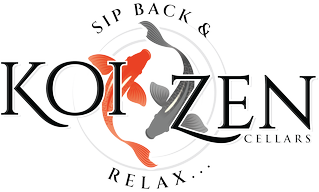Many people grab a glass of wine and just chuck it back while in mid-sentence while being highly distracted; instead let’s learn how to focus on the moment (very Zenish) and understand everything that is about to happen as we learn the art of wine sipping.
Strong flavors on the palate will alter the experience, so get rid of the gum, breath mint, pungent cheese or greasy dried meat flavors by using simple carbs such as crusty bread, water crackers or saltines. Avoid fats, sugars and proteins when evaluating a new wine. The old motto is: “buy wine with water, sell wine with cheese,” click here if you want to know why.
Next get in the moment and think about what is about to happen.
Take about a tablespoon of wine into your mouth and swish it around. Allow the wine to coat the inside of the mouth from top to bottom and front to back. Inhale slightly though the mouth to allow the esters to enter your retro nasal cavity – let it linger in your mouth and then swallow after a few seconds.
In my Wine Blending Classes, I call the first contact of wine on the palate the Attack, and after you swallow it begins the Finish. A lot is happening all at the same time so let’s start to break it down.
Think about the feeling inside of your mouth: temperature, texture, silkiness, viscosity, intensity. Where is it landing on the palate: front, back, sides, on top, under your tongue?
Within a few seconds the tannins will kick. Tannins cause your mouth to dry out, and pucker up. If you want to learn why, click here. Very tannic wines may cause you to reach for a glass of water.
Also the acids will begin to kick in within a few seconds which adds brightness to the wine; if the wine is highly acidic if you begin to salivate, while low acidic wines will have a creamy texture. Very low acidic wines will taste flat or flabby.
A highly alcoholic wine will cause a burning sensation (especially down the throat), while a very low alcohol content will taste like fruit juice and lack that “zip”. Very high alcohol content is often perceived as sweet.
Your tongue will also pick up any salt content such as is found in many Mexican reds grown in the Guadalupe Valley. Also the sweet receptors in your tongue will fire off if there is residual sugar on the wine.
Your smell receptors will fire off with hints of berry, fruit, floral, earth, mineral or alcohol depending upon the wine. The level of ripeness will be detectable: is the fruit under-ripe, ripe, over-ripe, cooked, jammy, stewed, dehydrated or rotten?
And all of this is happening within a few seconds and even before you swallow and start the Finish.
We will talk about finish next time, but remember: See, Swirl, Smell and then Sip. Next week we will talk about Savoring.
If you want to talk details, just pop by the winery were we always “Uncork, Sip Back and Relax”.
Cheers.
